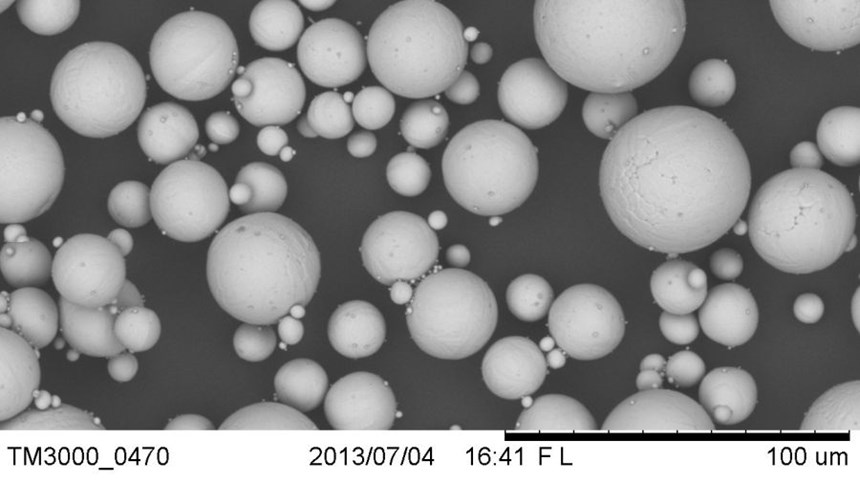Plasma Spheroidization Improves Quality of Metal Powder for AM
Plasma technology produces metal powders that are more spherical and provide better properties for additive manufacturing.
Share
Read Next
One of the things that makes additive manufacturing different from subtractive manufacturing is that the properties of the material are created along with the part. This is something that AM users must consider in designing the part and setting the parameters for the additive build; however, the extent to which a build can truly be controlled depends on the metal powder itself. Better powder—denser, cleaner and more spherical—behaves more predictably and thus results in better parts.
LPW Technology, a U.K.-based supplier of powder metals for additive manufacturing, recently put a new system in place that aims to achieve more spherical powder. Its plasma spheroidization system is the first known to be operating in Europe for commercial use, the company says.
The spheroidization process works by passing raw material—angular particles of metal or previously used powders—through high-energy plasma gas. The material melts and is reformed into spherical particles with few satellites (smaller particles that stick to larger ones); this results in a batch of powder that is more suitable for AM.
According to Mike Ford, LPW sales director, the plasma spheroidization process can be highly controlled, down to the size of the particles. This is in contrast to gas atomization, which passes materials through argon or nitrogen gas and is how the majority of metal powders for additive manufacturing are made. Gas atomized materials are mostly spherical, but tend to have some asymmetric particles and satellites. Compared to gas atomization, plasma spheroidization can provide more consistent results in manufacturing or recycling powders.
For the end user, the process offers both physical and chemical advantages. The more spherical powder has better flowabilty inside an AM machine, meaning less downtime and faster production. Additionally, the plasma spheroidization process removes contamination and reduces oxygen that can accumulate when powder is re-used. Removing excess oxygen from the material helps improve mechanical properties in the final part.
So far LPW has used plasma spheroidization to produce powders from tantalum, tungsten and titanium alloys. Other refractory metals are in the works, such as molybdenum and niobium, as well as nickel-based super alloys. The process is not suitable for all materials, as the heat of the plasma can cause metals with lower melting points to vaporize.
Perhaps more significantly, the technology also has value for recycling used materials. Using the plasma spheroidization equipment to process old powders, LPW has the capability to blend batches of materials and resize the particles. Testing in the company’s lab is performed before and after processing to verify the properties of the powder and ensure it is comparable to virgin material. Recycling metals via plasma spheroidization reduces material costs for the user, but also help to ensure the quality of the recycled powder.
The company currently has several customers on board to beta test its recycling service and is seeking more to help test and prove out this process.
Related Content
-
3D Printed Cold Plate for an Electric Race Car: The Cool Parts Show #51
An unconventional lattice design and biomimicry are key to the performance of this fluid-cooled heat exchanger for a battery-powered race car.
-
Additive Manufacturing Is Subtractive, Too: How CNC Machining Integrates With AM (Includes Video)
For Keselowski Advanced Manufacturing, succeeding with laser powder bed fusion as a production process means developing a machine shop that is responsive to, and moves at the pacing of, metal 3D printing.
-
VulcanForms Is Forging a New Model for Large-Scale Production (and It's More Than 3D Printing)
The MIT spinout leverages proprietary high-power laser powder bed fusion alongside machining in the context of digitized, cost-effective and “maniacally focused” production.

.jpg;width=70;height=70;mode=crop)















